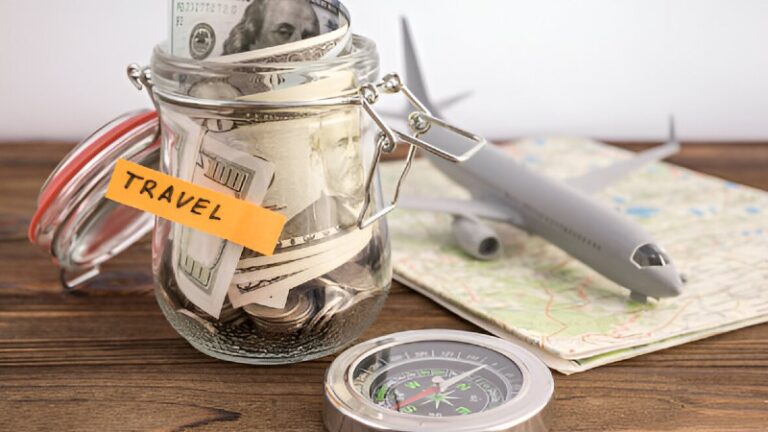Traveling is one of life’s most enriching experiences, yet the cost of a big trip often deters even the most eager explorers. From flights and accommodations to meals and activities, expenses can quickly add up. The good news? With smart planning, disciplined saving, and a few creative strategies, you can fund your dream trip without financial stress.
1. Start With a Clear Travel Budget
A detailed travel budget is the cornerstone of successful saving. Without a plan, expenses can spiral out of control.
Step-by-Step Budget Creation
- Determine your destination and dates: Knowing where and when you’re going helps estimate costs accurately.
- Estimate core expenses: Include flights, accommodation, meals, transportation, and attractions.
- Factor in pre-trip costs: Luggage, travel insurance, vaccinations, and gear like adapters or travel-friendly clothing.
- Include a buffer: Set aside 10–15% of the total budget for unexpected expenses such as delays, extra activities, or souvenirs.
Example Budget Table
| Category | Estimated Cost | Notes |
|---|---|---|
| Flights | $600 | Round-trip economy, booked 3 months in advance |
| Accommodation | $800 | Vacation rental for 7 nights |
| Meals | $350 | Mix of dining out and groceries |
| Activities & Attractions | $300 | Tickets, tours, and excursions |
| Transportation | $150 | Local transit and occasional rideshares |
| Miscellaneous | $100 | Souvenirs, tips, small emergencies |
| Total | $2,300 |
2. Open a Dedicated Travel Fund
Separating your vacation savings from everyday funds reduces the temptation to spend. Consider the following approaches:
- Automatic transfers: Set your bank account to move a fixed amount to a travel savings account each month.
- Round-up apps: Use apps that round up purchases to the nearest dollar and deposit the difference into your vacation fund.
- Separate account: Keep your travel money in a high-yield savings account to earn interest while saving.
Example: If you aim for a $2,400 trip in 12 months, automatic monthly transfers of $200 will get you there without stress.
3. Leverage Behavioral Finance for Consistent Savings
Behavioral finance explores how psychological tendencies affect money habits. Applying these principles can supercharge your travel fund.
Practical Techniques
- Visual Goal Setting: Create a visual tracker or vision board of your dream destination. This constant reminder encourages consistent saving.
- Pre-spend strategy: Treat your savings like a fixed expense. Just as you pay rent or utilities, allocate money to your travel fund first each month.
- Reward milestones: Celebrate reaching 25%, 50%, or 75% of your savings goal with small, low-cost rewards.
By combining emotional motivation with a structured plan, you are more likely to stick to your savings schedule.
4. Cut Expenses Without Feeling Deprived
Smart budgeting isn’t about deprivation—it’s about reallocating funds. Here are some often-overlooked strategies:
Dining & Food
- Cook meals at home instead of dining out. Save $50–100 per week depending on your habits.
- Meal prep and pack snacks for work or school to avoid impulse spending.
- Use cashback apps or grocery loyalty programs to earn points for essentials.
Subscriptions & Entertainment
- Pause streaming services or gym memberships you rarely use.
- Utilize free community events, public libraries, and outdoor activities for entertainment.
Shopping Habits
- Sell unused items on eBay, Facebook Marketplace, or local consignment shops.
- Adopt a 30-day rule for non-essential purchases to avoid impulse buying.
- Use cashback and coupon apps to maximize savings on necessary purchases.
5. Maximize Travel Deals
Once you’ve accumulated savings, smart booking can stretch your money further.
Flight Strategies
- Fly mid-week to save up to 40% on airfare.
- Use price tracking tools like Google Flights, Skyscanner, or Hopper to monitor fare fluctuations.
- Book 6–8 weeks in advance for domestic flights and 3–5 months for international travel for optimal pricing.
Accommodation Options
- Consider vacation rentals, hostels, or university dorms during off-term periods.
- Join loyalty programs for hotels and rental platforms to earn free nights or discounts.
- Book directly with hotels or hosts to avoid third-party fees.
Activity Savings
- Research free or low-cost attractions like national parks, festivals, and city walking tours.
- Bundle tickets or purchase multi-attraction passes for cost savings.
- Check local tourism offices and libraries for coupons or free event information.
6. Innovative Ways to Earn Extra Vacation Funds
In addition to cutting expenses, consider generating extra income specifically for your trip:
- Freelancing: Offer services like tutoring, writing, or graphic design online.
- Monetize hobbies: Sell handmade crafts, photography, or digital content.
- Seasonal gigs: Babysitting, pet sitting, or holiday-related work.
- Cashback & points: Use rewards credit cards for regular expenses and redeem for flights, hotels, or gift cards.
Example: Earning an extra $100–$200 per month from a side hustle can add $1,200–$2,400 to your travel fund over a year.
7. Travel Smart to Reduce On-the-Ground Costs
Saving doesn’t stop at planning and booking. During the trip itself, strategic choices can stretch your budget:
- Use public transportation instead of taxis or ride-shares.
- Stay somewhere with a kitchen to prepare meals rather than eating out constantly.
- Bring reusable water bottles and refill to avoid bottled water costs.
- Look for free walking tours, parks, museums, and local events.
- Focus on experiences rather than souvenirs; memories last longer than trinkets.
8. Monitor Progress and Adjust
Regularly tracking your savings progress keeps your goals realistic and achievable:
- Review your travel fund monthly and adjust contributions if needed.
- Use apps or spreadsheets to monitor your budget and upcoming expenses.
- Celebrate milestones to maintain motivation.
Pro Tip: If you notice overspending in one area, temporarily cut back to stay on track without affecting the overall trip plan.
Conclusion
Saving for a big trip is both an art and a science. By combining a clear budget, dedicated savings, behavioral finance techniques, smart spending, and creative earning strategies, your dream vacation can become a reality sooner than you think. The key is consistency, planning, and keeping your ultimate goal in mind. Whether it’s exploring Europe, trekking in Asia, or a family road trip, these strategies ensure you’ll arrive prepared and financially confident.
Start small, plan strategically, and watch your travel fund grow. Your next adventure is just around the corner!
Frequently Asked Questions (FAQs)
Begin by creating a detailed travel budget, opening a dedicated savings account, and setting up automatic monthly transfers. Visual goal trackers can also help you stay motivated.
How much should I save each month for a vacation?
Divide your estimated trip cost by the number of months until departure. For example, a $2,400 trip in 12 months requires $200 per month.
Can I save money while traveling?
Yes! Use public transportation, cook meals when possible, focus on free attractions, and prioritize experiences over souvenirs to stretch your budget.
Are loyalty programs worth joining for vacation savings?
Absolutely. Airline and hotel loyalty programs can provide discounts, free stays, and bundled travel perks that reduce overall costs.
What are some creative ways to fund a trip faster?
Consider side hustles, selling unused items, using cashback apps, or adopting behavioral finance techniques like pre-spending and milestone rewards to accelerate savings.


